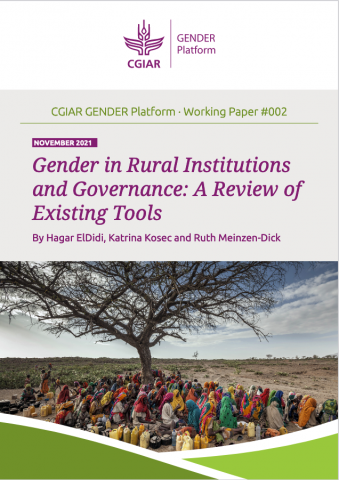Gender in rural institutions and governance: A review of existing tools. CGIAR GENDER Platform working paper 002.
Abstract
The role of gender in institutions and governance affecting rural areas is complex and multifaceted; the tools and methods to analyze and explore their interactions must address this complexity. Researchers, practitioners and policymakers from various disciplinary backgrounds have used a wide range of tools. This paper provides them with guidance on the tools that are available, and points to gaps where methodological development is needed. Through a consultative search process including expert consultation and referrals supplemented by internet searches, we identified 69 tools at this nexus, encompassing frameworks, data-collection instruments, implementation and participatory implementation guides, and monitoring and evaluation tools. Data-collection tools and implementation guides emerged as the most common tool types. Most tools (72 percent) were designed to study or work with gender issues, but we included others if they could be naturally adapted or applied to gender research or practice. Reflecting the diversity of tools, we found a relatively even balance between qualitative, quantitative and mixed methods. Two-thirds of tools dealt with community-level institutions or governance, suggesting the importance of the local level in existing research and practice. We also identified a high prevalence of participatory tools—which may reflect concerns with, and thus support for interventions, enhancing women’s agency and gender equality in power relationships. Natural resource management and political engagement are the most common sectors covered, together comprising half of the tools. Natural resource management–focused tools span all tool types, with a large cluster in implementation guides, whereas most political engagement tools are data-collection instruments. Participation in groups is the most common focus of tools. Overall, the review highlights the wealth of tools available, as well as tool gaps (for example, climate change as a sector).

